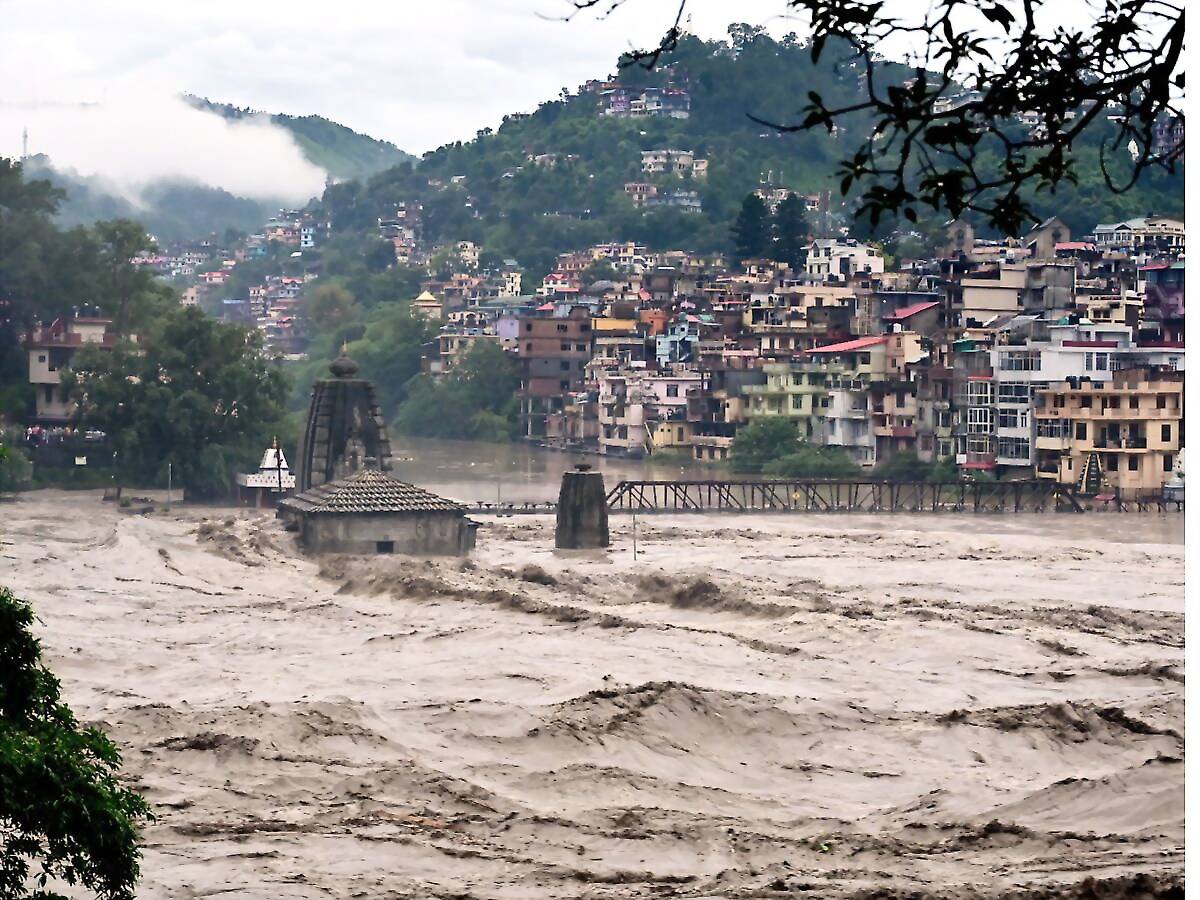
views
Over 56 people have been killed in Himachal Pradesh this week due to cloudburst and the resulting landslides. At least 19 bodies have been recovered since Monday and many others are feared to be trapped at the collapsed Shiva temple site in Shimla.
Heavy rains have battered Himachal Pradesh since Sunday, triggering landslides and cloudbursts that blocked several roads and led to house collapse incidents. A total of 170 incidents of cloudburst and landslide have been reported in the state this monsoon season and about 9,600 houses damaged.
What is a cloudburst?
A cloudburst can be described as very heavy rainfall that suddenly occurs for a brief period over a localised area. While it can also occur in plains, the phenomenon is most common in hilly regions.
Cloudburst is a small-scale event and takes place over hilly areas in the Himalayas or in the Western Ghats. It occurs when warm monsoon winds interact with cold winds leading to the formation of massive clouds, which is also due to the topography or orographic factors.

However, not all instances of heavy rainfall can be called cloudbursts. A cloudburst is referred to a rainfall of 10 cm or more in an hour over an area of 100 square kilometres. The rainfall of 5 cm in a half-hour period over the same area would also be categorised as a cloudburst.
The extent of the rainfall can be gauged by the fact that India, as a whole, receives about 116 cm of rainfall over the entire year. During a cloudburst, a local area can receive about 10% of this annual rainfall within an hour.
Why Are They Difficult to Predict?
The cloudburst is an unpredictable and stealthy weather event. Mostly unannounced and occurring in the upper reaches that are difficult to access, the localised weather event is known to trigger flash floods that can wash away large human settlements as water gushes downstream.
But in the Himalayan region, as majority of the cases of cloudbursts happen in small valleys, it is difficult to predict them even with a doppler radar.
Horrifying visuals of another landslide that look place at Krishna Nagar- Shimla today. The residents of these houses were evacuated earlier this morning by the administration fearing landslide. #HimachalFloods #landslides #shimlafloods #shimla pic.twitter.com/bJNNSn9hhp
— Sukhvinder Singh Sukhu (@SukhuSukhvinder) August 15, 2023
Doppler radars, a specialised radar that uses the Doppler effect to produce velocity data about objects, can be helpful in predicting them.
A cloudburst can have a devastating impact triggering flash floods. These floods can cause uprooting of trees and movement of boulders and other debris. On its way down, the water gathers speed and force and can sweep aside structures in the way. Cloudbursts can also cause landslides in hilly areas while in the plains, it can lead to rapid flooding.
Why are Cloudbursts Frequent in Himachal?
Cloudbursts are not uncommon events, especially during the monsoon months between June and September. Most of these events happen in the Himalayan states where the local topology, wind systems, and temperature gradients between the lower and upper atmosphere facilitate the occurrence of such events.
According to the Indian Meteorological Department, the monsoon trough is currently centred over Uttarakhand and Himachal Pradesh that has led to an increase in rain activity across the Himalayan states.
Himachal also saw record downpour in July, where record monsoon showers killed more than 100 people over two weeks in north India, including Himachal Pradesh, which was the worst hit.
It has been observed that the frequency of occurrences of cloud bursts is more in July and August than in June and September. Moreover, Kullu, Shimla, Kinnaur and Mandi are most vulnerable to these unusual events.















Comments
0 comment